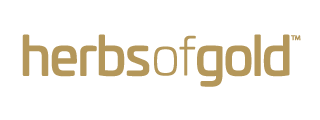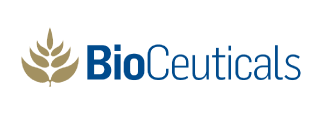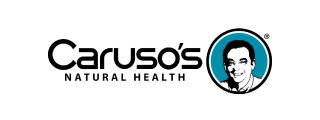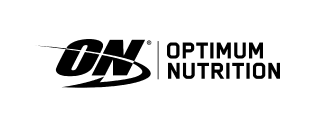
- Health advice
- Apr 05, 2018
Avoiding a chemical cocktail, keeping your family clean in winter
Your skin is your largest organ, responsible for protecting us from the weather as well as harmful bacteria and outside dangers. Because your skin is semi-permeable it absorbs the majority of what you apply to it, making your choice of soaps and cleansers especially important. While you may think that your standard anti-bacterial soap is doing your family good, it could be causing a whole range of other problems.The top 6 ingredients to avoid when choosing a soap or cleanser for your family
Many standard soaps have a whole host of toxic ingredients, that are damaging to your families skin and overall health. Harsh chemicals and additives often found in standard soaps include the following:Sodium Lauryl Sulphate
Sodium Lauryl sulphate is a chemical called a surfactant, which means that the chemical separates molecules for better interaction between the product and your skin. Sodium Lauryl Sulphate is commonly found in industrial strength anti-bacterial detergents and engine cleaners. When used in high concentration, Sodium Lauryl Sulphate was found to be an irritant to the skin. For that reason, Sodium Lauryl Sulphate is best avoided, especially in those with dry, sensitive skin.
Sodium Laureth Sulphate
The use of Sodium Laureth Sulphate in skin care is concerning as although it’s found to be less o a skin irritant than SLS, it’s often contaminated with a substance called dioxane, a carcinogen.
Parabens
Parabens, often found in cosmetic and skin problems are a problem due o their link with oestrogenic cancers such as breast cancer. Studies have found that parabens have been present in 99% of cancerous breast tissue samples. Further studies have suggested that parabens may contribute to formation of breast cancer by inhibiting the suppression of breast cancer cell growth by binding to the estrogen receptor and preventing it’s deactivation by growth inhibitors.
Triclosan
Triclosan is an antibacterial and anti -fungal agent often used in soaps, detergents and cleansers. Studies have linked repeated exposure to triclosan with a decrease in some thyroid hormones, impacting metabolic function.
Fragrance
Artificial fragrance contains a whole host of nasties derived from petrochemicals including phthalates and aldehydes. These chemicals are drying on the skin, as well as contributing to endocrine disruption.
Phthalates
Phthalates are a group of chemicals used to soften plastics. Phthalates are commonly found in skin and personal care products such as moisturises and soaps due to it’s softening effect.
What Damage can chemical cleansers cause?
One of the major side effects of using products containing these chemcials is that they cause endocrine disruption. Your endocrine system is made up of organs such as the thyroid and adrenal glands aswell as parts of your brain including the hypothalamus. Your endocrine system is responsible for hormonal regulation in the body. Hormones control a wide range of functions in your body, including metabolic function and reproductive function. Disruption of these hormones can contribute to a host of endocrine disorders including hypo/hyperthyroidism, polycystic ovarian syndrome, diabetes mellitus and insulin resistance.What Ingredients should I look to include when choosing a soap or cleanser?
When choosing a cleanser or soap, ingredients to include are:Teatree oil
Teatree oil is a natural anti-bacterial, anti-fungal and anti-microbial, making it an excellent addition to a soap or cleanser. Studies found that used in higher concentration, tea tree oil was found to be bactericidal in nature, where when used at lower concentrations, tea tree oil had a bacteriostatic effect.
Manuka honey
Manuka honey is an ingredient that has many properties useful in chemical free cleansers. Manuka honey is found to be an anti-bacterial that works by decreasing virulence as well as blocking bacterial communication. This means that bacteria are unlikely to develop resistance to honey, as they would with typical antibiotics.
Thyme
Like manuka honey and tea tree oil, thyme has also been found to have antibacterial properties. When assessed, thyme essential oil showed high antimicrobial activity against infection causing Staphylococcus aureus.
Jojoba oil
Using a soap or cleanser that uses both anti -bacterial ingredients and nourishing oils to prevent dry skin is recommended. Oils such as jojoba is recommended as jojoba oil is close in nature to sebum, the natural secretions produced by the skin.
While keeping your families skin clean and healthy is important, especially coming into winter, avoiding harmful ingredients is equally important. Our Naturopaths and Nutritionists recommend keeping your family healthy throughout the cooler season by maintaining a healthy hygiene routine, immune boosting supplements and a nourishing diet.
Ashley Baker | Nutritionist
Ashley is a qualified Nutritionist ( Bachelor of Health Science (Nut Med) passionate about home cooking and healing through wholefoods. Her special interests include disorders of the skin and childrens health, including fussy eaters!References
- Carson, C., Hammer, K. and Riley, T. (2006). Melaleuca alternifolia (Tea Tree) Oil: a Review of Antimicrobial and Other Medicinal Properties. Clinical Microbiology Reviews, 19(1), pp.50-62.
- Hussain, M. (2018). Role of Honey in Topical and Systemic Bacterial Infections. The Journal of Alternative and Complementary Medicine, 24(1), pp.15-24.
- Pedonese, F., Fratini, F., Pistelli, L., Porta, F., Di Ciccio, P., Fischetti, R., Turchi, B. and Nuvoloni, R. (2017). Antimicrobial activity of four essential oils against pigmenting Pseudomonas fluorescens and biofilmproducing Staphylococcus aureus of dairy origin. Italian Journal of Food Safety, 6(4).
Related Articles
Recently Viewed
- ${ variant.price | currencyFromCents } | ${ variant.title } ${ variant.price | currency } | ${ variant.title }




















